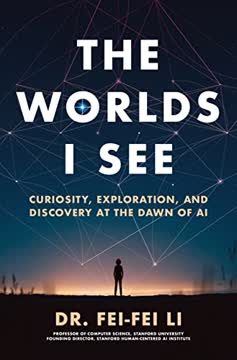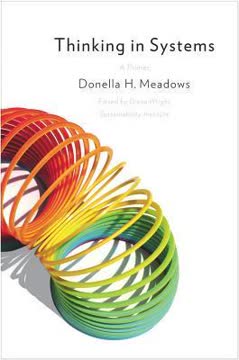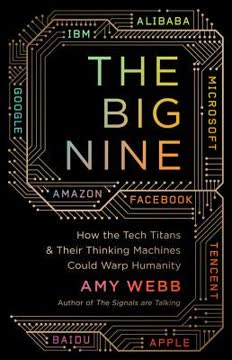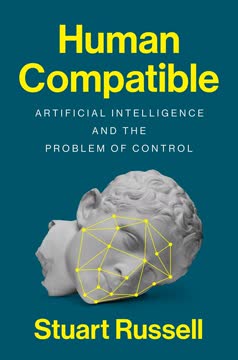نکات کلیدی
1. ابرذهنها: هوش جمعی گروههای انسانی
"تاریخ بشریت عمدتاً تاریخ ابرذهنهای انسانی است، از اینکه چگونه انسانها در گروهها—مانند سلسلهمراتبها، جوامع، بازارها و دموکراسیها—کارهایی را انجام دادهاند که انسانهای فردی هرگز نمیتوانستند به تنهایی انجام دهند."
تعریف ابرذهنها. ابرذهن گروهی از افراد است که به صورت جمعی به گونهای عمل میکنند که به نظر هوشمندانه میآید. این مفهوم فراتر از گروههای انسانی است و شامل ترکیب انسانها و کامپیوترها نیز میشود. هوش این ابرذهنها اغلب از هوش اعضای فردی فراتر میرود.
دیدگاه تاریخی. در طول تاریخ، پیشرفت انسانی بیشتر توسط تلاشهای جمعی به جای دستاوردهای فردی هدایت شده است. از گروههای شکار اولیه تا شرکتهای مدرن، ابرذهنها در حل مشکلات پیچیده و پیشرفت تمدن نقش حیاتی داشتهاند.
اندازهگیری هوش جمعی. تحقیقات نشان میدهد که هوش گروهی میتواند به شیوهای مشابه با هوش فردی اندازهگیری شود. عواملی که به هوش جمعی یک گروه کمک میکنند شامل:
- درک اجتماعی اعضای گروه
- توزیع برابر نوبتگیری در مکالمات
- نسبت زنان در گروه (که با درک اجتماعی بالاتر مرتبط است)
2. پنج نوع ابرذهن: سلسلهمراتبها، بازارها، جوامع، دموکراسیها و اکوسیستمها
"همه این انواع مختلف ابرذهنها به طور مداوم در حال تعامل هستند: گاهی همکاری، گاهی رقابت، گاهی به طور کامل یکدیگر را نابود میکنند."
سلسلهمراتبها. با تصمیمگیری مبتنی بر اقتدار مشخص میشوند و در کسبوکارها و دولتها رایج هستند. آنها در هماهنگی وظایف پیچیده مهارت دارند اما ممکن است در تطبیق کند باشند.
بازارها. بر اساس توافقات متقابل بین خریداران و فروشندگان، بازارها منابع را به طور کارآمد تخصیص میدهند اما ممکن است به اثرات خارجی بیتوجه باشند.
جوامع. با هنجارها و ارزشهای مشترک هدایت میشوند و همکاری را تقویت میکنند اما ممکن است در مقیاس محدود باشند.
دموکراسیها. تصمیمگیری از طریق رأیگیری امکان مشارکت گسترده را فراهم میکند اما ممکن است زمانبر باشد و همیشه به نتایج بهینه منجر نشود.
اکوسیستمها. ابرذهن فراگیر که در آن همه دیگران تعامل دارند، اکوسیستمها بر اصول بقا برای بهترینها عمل میکنند.
3. فناوری اطلاعات به عنوان کاتالیزوری برای ابرذهنهای هوشمندتر
"برای مدت طولانی، مهمترین سهم کامپیوترها هوش مصنوعی نخواهد بود؛ بلکه ابراتصالپذیری—اتصال ذهنهای انسانی به یکدیگر به روشهای جدید و در مقیاسهای بیسابقه—خواهد بود."
افزایش ارتباطات. فناوری اطلاعات به طور چشمگیری هزینه را کاهش و سرعت ارتباطات را افزایش میدهد، به ابرذهنها اجازه میدهد در مقیاس جهانی عمل کنند.
تقویت قابلیتهای انسانی. هوش مصنوعی و دیگر فناوریها میتوانند مهارتهای انسانی را تکمیل کنند و سیستمهای سایبری-انسانی مؤثرتری ایجاد کنند. مثالها شامل:
- بازارهای پیشبینی که بینشهای انسانی را با یادگیری ماشین ترکیب میکنند
- پلتفرمهای آنلاین مانند Climate CoLab برای حل مشکلات جهانی
- دستیارهای هوش مصنوعی در تشخیص پزشکی و تحقیقات حقوقی
چالشها و فرصتها. در حالی که هوش مصنوعی نگرانیهایی درباره جابجایی شغلی ایجاد میکند، همچنین نقشها و صنایع جدیدی را ایجاد میکند. کلید این است که بر وظایفی تمرکز کنیم که در آنها انسانها و ماشینها میتوانند به طور مؤثر همکاری کنند.
4. تخصصگرایی فوقالعاده: تقسیم کار جدید در عصر دیجیتال
"شاید واضحترین راه برای گروهها برای تصمیمگیری استفاده از نوع ابرذهنی است که ما آن را سلسلهمراتب مینامیم."
وظایف خرد و استخرهای استعداد جهانی. پلتفرمهایی مانند Mechanical Turk آمازون امکان تقسیم کار به وظایف کوچک و تخصصی را فراهم میکنند که میتواند توسط نیروی کار جهانی انجام شود.
مزایا و نگرانیها. تخصصگرایی فوقالعاده میتواند به افزایش کارایی و دسترسی به تخصص جهانی منجر شود. با این حال، نگرانیهایی نیز درباره:
- امنیت شغلی و حقوق کارگران
- پتانسیل ایجاد "کارگاههای دیجیتال"
- از دست دادن درک جامع از وظایف
تعادل بین تخصص و یکپارچگی. در حالی که تخصصگرایی فوقالعاده امکان تخصص عمیق را فراهم میکند، ابرذهنهای موفق نیز به روشهایی برای یکپارچهسازی دانش تخصصی به راهحلهای منسجم نیاز دارند.
5. حلقههای یادگیری سایبری-انسانی: بهبود مستمر از طریق همکاری
"با گذشت زمان، کامپیوترها قادر خواهند بود بیشتر کارها را خودشان انجام دهند."
فرآیند یادگیری تکراری. حلقههای یادگیری سایبری-انسانی شامل:
- انسانها وظایف را انجام میدهند
- کامپیوترها عملکرد را ضبط و تحلیل میکنند
- الگوریتمها پیشنهاد بهبود میدهند
- انسانها تغییرات را اجرا میکنند
- تکرار چرخه
کاربردها در صنایع مختلف. این رویکرد میتواند در زمینههای مختلف اعمال شود:
- تشخیص و درمان پزشکی
- تحقیقات حقوقی و تحلیل پرونده
- توسعه و رفع اشکال نرمافزار
- بهینهسازی فرآیند تولید
اتوماتیکسازی تدریجی. با یادگیری سیستم، کامپیوترها میتوانند وظایف بیشتری را بر عهده بگیرند و انسانها را آزاد کنند تا بر مشکلات سطح بالاتر و خلاقیت تمرکز کنند.
6. ذهن جهانی: آینده متصل ما
"ذهن جهانی چیزی نیست که یا وجود داشته باشد یا نداشته باشد. بلکه مانند هوش جمعی و ابرذهنها، یک دیدگاه است—راهی برای نگاه به جهان."
ظهور آگاهی جهانی. با پیشرفت فناوریهای ارتباطی، ارتباطات دانش و فعالیت انسانی آشکارتر میشود و نوعی ذهن جهانی را تشکیل میدهد.
ویژگیهای ذهن جهانی:
- اشتراکگذاری سریع اطلاعات در سراسر سیاره
- حل مشکلات جمعی در مقیاس جهانی
- ظهور هنجارها و ارزشهای جهانی
چالشها و فرصتها. ذهن جهانی پتانسیل بیسابقهای برای حل مشکلات پیچیده ارائه میدهد اما همچنین مسائلی را مطرح میکند از جمله:
- حریم خصوصی و مالکیت دادهها
- همگنسازی فرهنگی
- دسترسی نابرابر به اطلاعات و منابع
7. تعادل پیشرفت و اخلاق در عصر ابرذهنها
"شاید قدرتمندترین راه برای تأثیرگذاری بر کنگره ایالات متحده تغییر دیدگاههای رأیدهندگانی است که آنها را انتخاب میکنند."
ملاحظات اخلاقی. با قدرتمندتر شدن ابرذهنها، سوالات اخلاقی مهمی مطرح میشود:
- چگونه میتوان عدالت و شمولیت را در تصمیمگیری تضمین کرد؟
- چه کسی مسئول اقدامات سیستمهای همکاری انسان-هوش مصنوعی است؟
- چگونه میتوان حریم خصوصی فردی را در حالی که از هوش جمعی بهره میبرد، محافظت کرد؟
شکلدهی به آینده. توسعه ابرذهنها از پیش تعیین شده نیست. افراد و جوامع میتوانند جهت آنها را از طریق:
- سیاستگذاری و تنظیم مقررات
- آموزش و آگاهی عمومی
- اصول طراحی اخلاقی در توسعه فناوری
دیدگاه بلندمدت. در حالی که تأثیرات فوری فناوریهای ابرذهن ممکن است مخرب باشد، پتانسیل بلندمدت برای بهبود رفاه انسانی قابل توجه است. تعادل بین نگرانیهای کوتاهمدت و منافع بلندمدت برای تحقق کامل پتانسیل ابرذهنها حیاتی است.
آخرین بهروزرسانی::
FAQ
What's Superminds about?
- Collective Intelligence Focus: Superminds by Thomas W. Malone explores how groups of people and computers can solve problems more effectively than individuals. It examines various forms of collective intelligence, such as hierarchies, communities, markets, and democracies.
- Role of Technology: The book discusses how advancements in information technology enhance collective intelligence, allowing humans and computers to collaborate in unprecedented ways.
- Future Implications: Malone explores how these superminds can address global challenges like climate change and economic inequality by leveraging collective intelligence.
Why should I read Superminds?
- Understanding Modern Collaboration: The book provides insights into effective group collaboration in the digital age, highlighting the importance of collective intelligence in business and governance.
- Future-Proofing Knowledge: It prepares readers for future changes in work and collaboration, emphasizing the need to adapt to new forms involving both humans and machines.
- Practical Applications: Malone offers practical examples and case studies, demonstrating how collective intelligence can lead to innovative solutions for complex problems.
What are the key takeaways of Superminds?
- Definition of Superminds: A supermind is a group of individuals acting together intelligently, emphasizing collaboration and shared goals in achieving collective intelligence.
- Types of Superminds: The book categorizes superminds into hierarchies, democracies, markets, and communities, each with strengths and weaknesses in decision-making.
- Impact of Technology: Information technology significantly enhances superminds' capabilities, allowing smarter decision-making and more effective collaboration.
What are the best quotes from Superminds and what do they mean?
- "Supermind is a powerful combination of many individual minds.": This quote highlights the strength of collective intelligence, suggesting that collaboration can lead to outcomes surpassing individual efforts.
- "The intelligence of human groups—not individual humans—led to human success.": It underscores the importance of collective intelligence in achieving progress and solving complex problems.
- "Hyperconnectivity will allow humans and computers to work together.": This emphasizes the future potential of technology in enhancing collective intelligence, suggesting unprecedented problem-solving abilities.
How does Superminds define "collective intelligence"?
- Broad Definition: Collective intelligence is the shared or group intelligence emerging from collaboration and competition among individuals.
- Importance of Group Dynamics: It emphasizes that collective intelligence is not just the sum of individual intelligences but a unique property arising from effective collaboration.
- Measurement of Collective Intelligence: Malone discusses research showing that collective intelligence can be measured similarly to individual intelligence, indicating some groups are inherently smarter.
How can superminds make smarter decisions according to Superminds?
- Hierarchical Decision-Making: Hierarchies streamline decision-making by having authority figures make choices, leading to efficient outcomes but potentially lacking lower-level input.
- Democratic Participation: Democracies allow broader participation through voting, leading to more representative outcomes, depending on voters' knowledge and engagement.
- Market Mechanisms: Markets facilitate decision-making through mutual agreements, allowing efficient resource allocation and optimal outcomes under the right conditions.
What role do computers play in enhancing superminds in Superminds?
- Tools and Assistants: Computers enhance human capabilities by facilitating communication and collaboration, automating routine tasks, and allowing focus on complex decision-making.
- Peer Collaboration: In some cases, computers act as peers, participating in decision-making processes alongside humans, leading to more informed and accurate outcomes.
- Managerial Functions: Computers can take on managerial roles, coordinating tasks and optimizing workflows, increasing efficiency and effectiveness in achieving group goals.
What is the concept of "hyperspecialization" in Superminds?
- Definition of Hyperspecialization: It refers to individuals focusing on highly specialized tasks leveraging their unique skills, enhancing job satisfaction and productivity.
- Impact on the Workforce: Hyperspecialization leads to a more flexible and dynamic workforce, allowing individuals to choose tasks aligning with their interests and expertise.
- Global Collaboration: Hyperspecialized workers can collaborate globally, taking advantage of economies of scale, enabling groups to tackle complex problems more effectively.
How does Superminds address the issue of climate change?
- Collective Action for Solutions: Malone emphasizes the importance of collective intelligence in addressing climate change, suggesting superminds can develop innovative solutions.
- Climate CoLab Example: The book discusses the Climate CoLab project, which crowdsources ideas for climate action, exemplifying how diverse input leads to effective strategies.
- Role of Technology: Technology facilitates collaboration and data sharing among stakeholders working on climate change, helping implement solutions more effectively.
How does Superminds envision the future of work?
- Shift Towards Collaboration: Malone predicts increased collaboration between humans and machines, redefining job roles through the combination of human creativity and machine efficiency.
- Emergence of New Job Types: New job categories will emerge, particularly in areas requiring interpersonal skills and creativity, with the gig economy offering flexible opportunities.
- Focus on Lifelong Learning: Continuous learning and adaptation are crucial, with individuals needing to develop new skills to thrive in an ever-changing job landscape.
What is the significance of "self-selection" in task assignment within superminds?
- Empowerment of Workers: Self-selection allows individuals to choose tasks aligning with their skills and interests, leading to higher motivation and productivity.
- Increased Engagement: Autonomy in task selection leads to more engaged and satisfied workers, resulting in better outcomes for individuals and organizations.
- Examples of Self-Selection: Platforms like Topcoder and InnoCentive demonstrate the effectiveness of self-selection in harnessing collective intelligence.
How does Superminds suggest we can improve decision-making in superminds?
- Leveraging Technology: Using information technology enhances communication and collaboration within superminds, leading to more informed decision-making and better outcomes.
- Encouraging Participation: Involving more individuals in decision-making processes generates diverse ideas and solutions, achievable through crowdsourcing and online platforms.
- Creating Hybrid Systems: Combining human and machine intelligence leads to smarter decision-making, allowing superminds to tackle complex problems more effectively.
نقد و بررسی
کتاب سوپرمایندز نظرات متنوعی را به خود جلب کرده و میانگین امتیاز آن ۳.۵۶ از ۵ است. خوانندگان از بررسی هوش جمعی و تعاملات انسان و کامپیوتر در این کتاب استقبال کرده و برخی از مفاهیم آن را تحریککننده مییابند. با این حال، بسیاری از منتقدان به کمبود اصالت، کاربردهای عملی و استدلالهای واضح در آن اشاره کردهاند. برخی آن را بسیار گسترده یا قدیمی میدانند، در حالی که دیگران به بینشهای آن در زمینه تصمیمگیری گروهی و ادغام هوش مصنوعی ارج مینهند. ساختار و سبک نوشتاری کتاب نیز موضوع بحث و جدل است؛ برخی آن را جذاب و برخی دیگر تکراری یا بهطور ضعیف نوشته شده میدانند.
Similar Books












